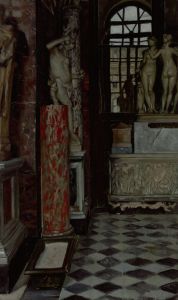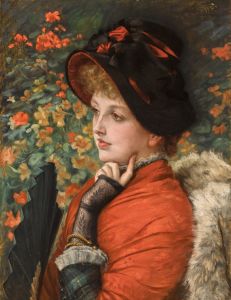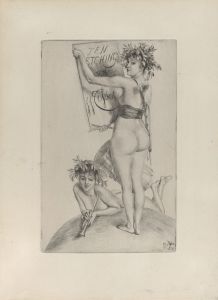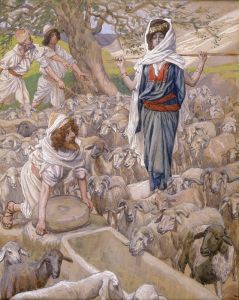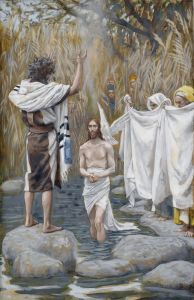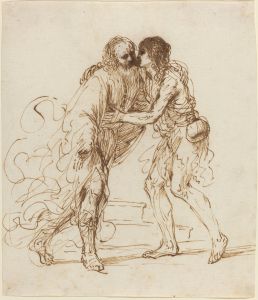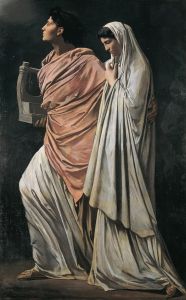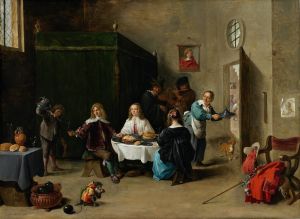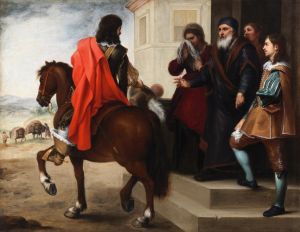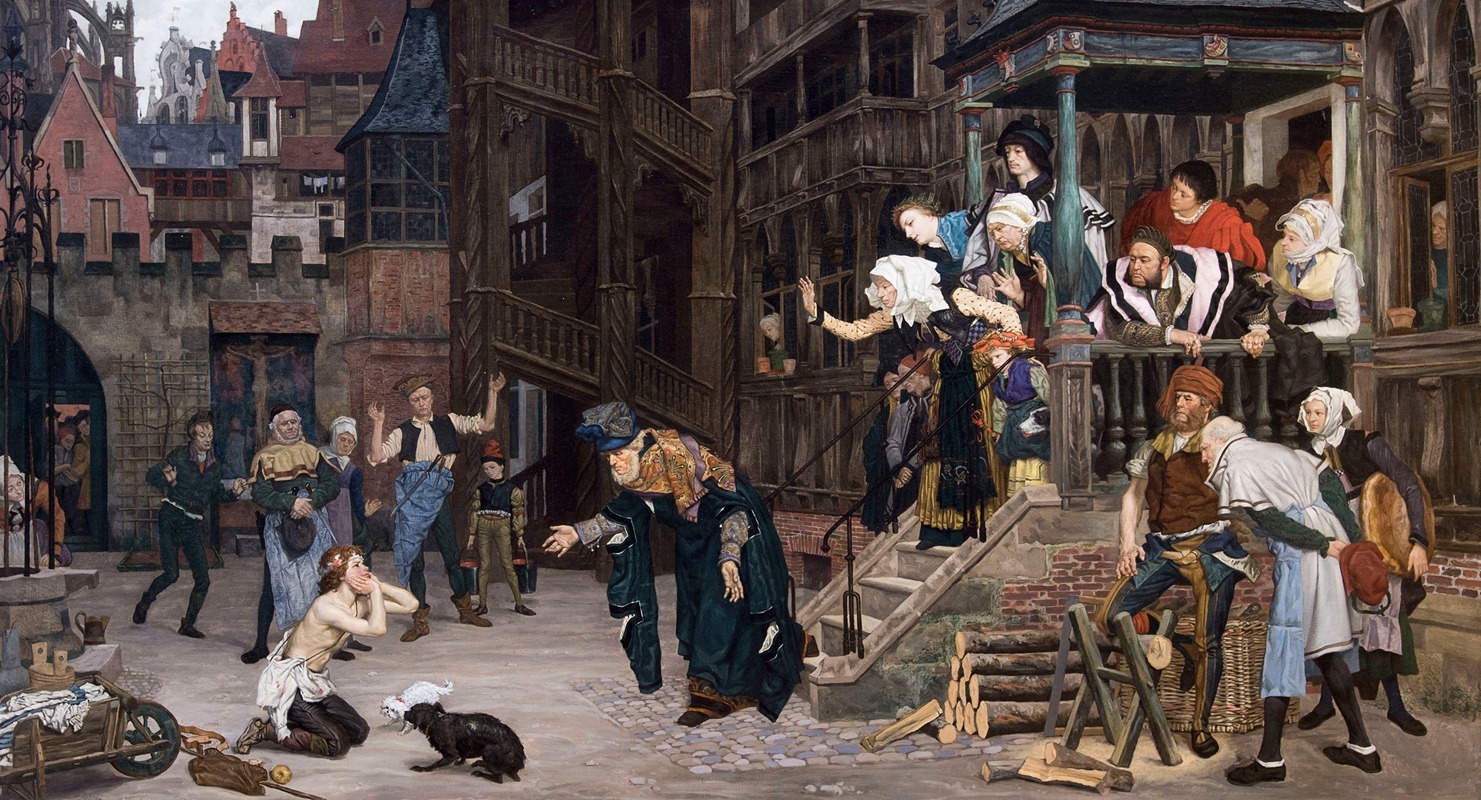
The Return of the Prodigal Son
A hand-painted replica of James Tissot’s masterpiece The Return of the Prodigal Son, meticulously crafted by professional artists to capture the true essence of the original. Each piece is created with museum-quality canvas and rare mineral pigments, carefully painted by experienced artists with delicate brushstrokes and rich, layered colors to perfectly recreate the texture of the original artwork. Unlike machine-printed reproductions, this hand-painted version brings the painting to life, infused with the artist’s emotions and skill in every stroke. Whether for personal collection or home decoration, it instantly elevates the artistic atmosphere of any space.
James Tissot's painting "The Return of the Prodigal Son" is a notable work that reflects the artist's interest in biblical themes and his ability to convey narrative through art. James Tissot, a French painter and illustrator, was born on October 15, 1836, in Nantes, France. He is best known for his detailed and realistic style, which he applied to both secular and religious subjects.
"The Return of the Prodigal Son" is part of Tissot's series of works that depict scenes from the Bible. This particular painting illustrates the well-known parable from the New Testament, found in the Gospel of Luke, chapter 15, verses 11-32. The parable tells the story of a wayward son who squanders his inheritance but is welcomed back by his forgiving father. This narrative has been a popular subject in art due to its themes of repentance, forgiveness, and redemption.
Tissot's interpretation of the parable is characterized by his attention to detail and his ability to capture the emotional essence of the scene. The painting typically depicts the moment when the prodigal son returns home and is embraced by his father. Tissot's use of color, light, and composition serves to highlight the emotional reunion between the father and son, emphasizing the themes of forgiveness and unconditional love.
James Tissot's religious works, including "The Return of the Prodigal Son," are part of a larger collection known as "The Life of Christ," which he began in the late 1880s. After experiencing a religious awakening, Tissot devoted much of his later career to illustrating the life of Jesus Christ and other biblical stories. He traveled to the Middle East to study the landscapes and people, aiming for historical accuracy in his depictions.
Tissot's biblical paintings were well-received during his lifetime and contributed to his reputation as a significant religious artist of the 19th century. His works were exhibited in various venues and were praised for their meticulous detail and narrative clarity. "The Life of Christ" series, including "The Return of the Prodigal Son," was eventually published in book form, further cementing Tissot's legacy as an illustrator of biblical stories.
Today, Tissot's works are held in various museums and collections around the world. His paintings continue to be appreciated for their artistic merit and their ability to convey complex religious themes in a relatable and visually compelling manner. "The Return of the Prodigal Son" remains an important example of Tissot's contribution to religious art and his skill in bringing biblical narratives to life through his unique artistic vision.





